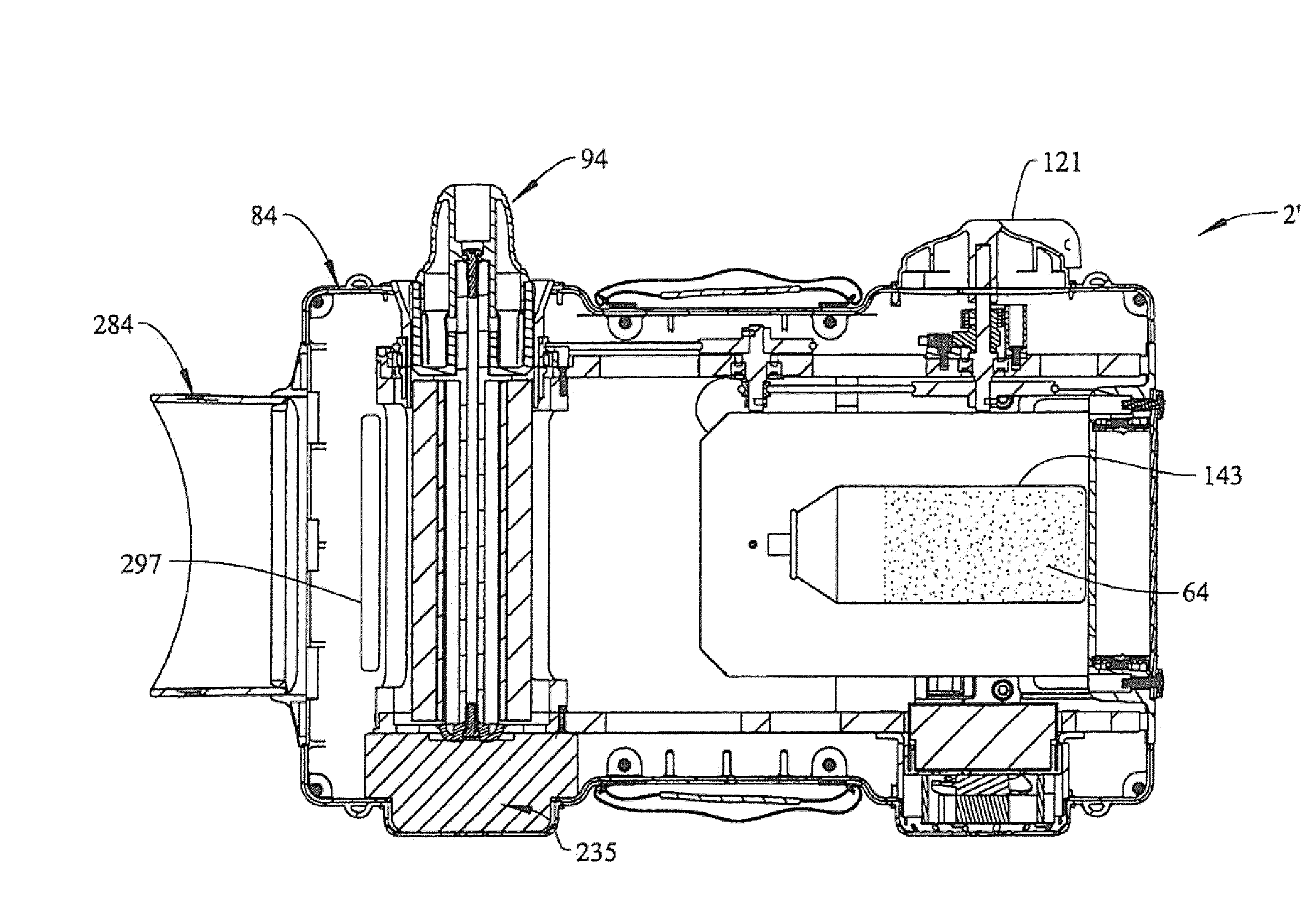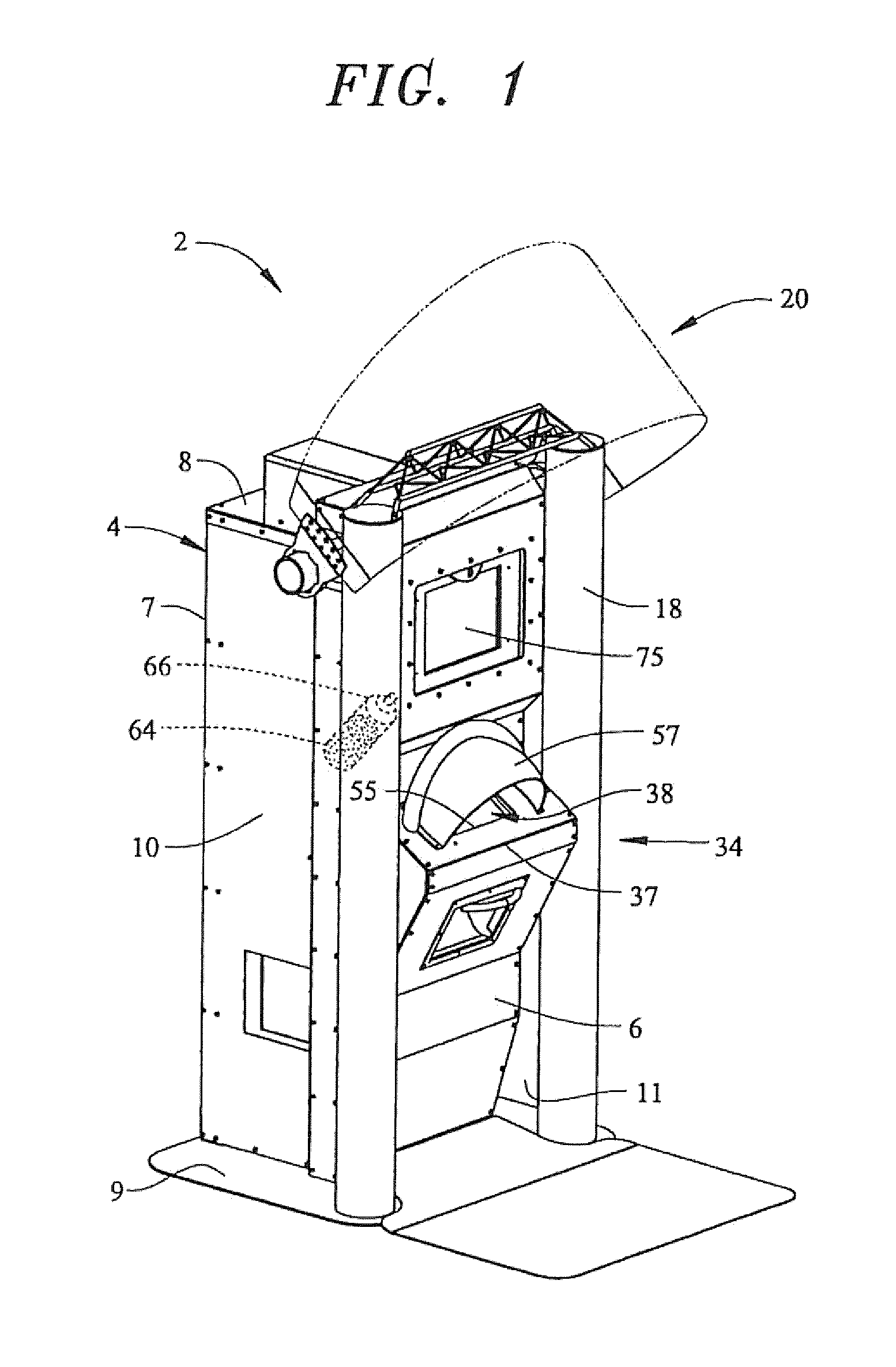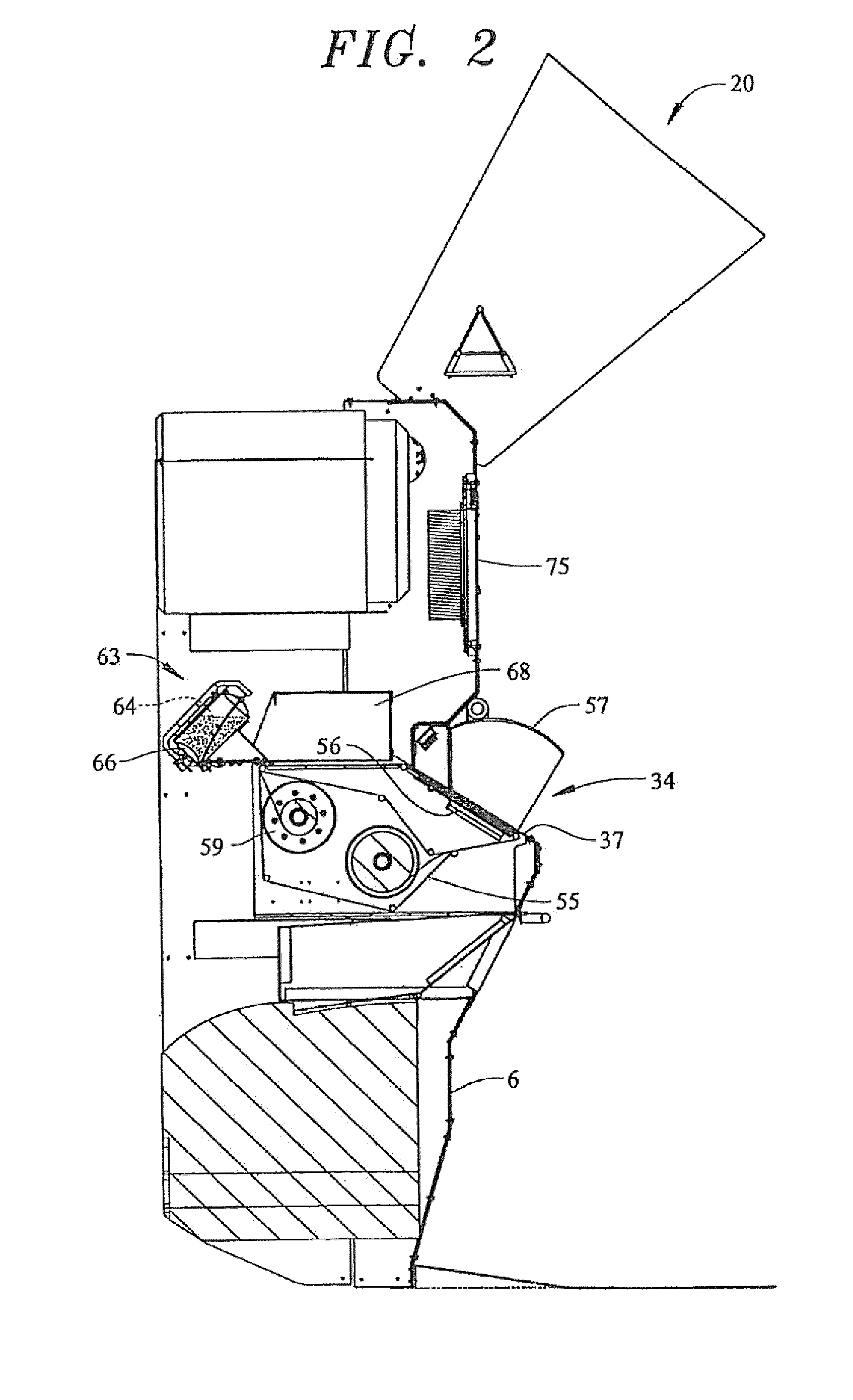Detection of Explosives Using Luminescence
- Summary
- Abstract
- Description
- Claims
- Application Information
AI Technical Summary
Benefits of technology
Problems solved by technology
Method used
Image
Examples
Embodiment Construction
[0015]With initial reference to FIGS. 1 and 2, a personnel screening system or kiosk 2 for the detection of explosives which can utilize in connection with the present invention. Screening system 2 includes a main housing 4 provided with a front wall 6, a rear wall 7, a top wall 8, a bottom wall or base 9 and opposing side walls 10 and 11. In addition, screening system 2 is provided with various accessories. For example, in the embodiment shown, screening system 2 is shown with a pair of columns 17 and 18, as well as a shield 20.
[0016]In any event, screening system 2 includes a collecting portion 34, arranged within a housing 37, that retrieves trace residue samples and certain demographic samples from a subject. As such, collecting portion 34 includes a residue sample collector 38 having a sample collecting sheet or substrate 55 positioned upon a palm pad 56 below a cowl 57. Sample collecting sheet 55 is provided on a continuous roll 59 that enables screening system 2 to provide a ...
PUM
 Login to View More
Login to View More Abstract
Description
Claims
Application Information
 Login to View More
Login to View More - R&D
- Intellectual Property
- Life Sciences
- Materials
- Tech Scout
- Unparalleled Data Quality
- Higher Quality Content
- 60% Fewer Hallucinations
Browse by: Latest US Patents, China's latest patents, Technical Efficacy Thesaurus, Application Domain, Technology Topic, Popular Technical Reports.
© 2025 PatSnap. All rights reserved.Legal|Privacy policy|Modern Slavery Act Transparency Statement|Sitemap|About US| Contact US: help@patsnap.com



